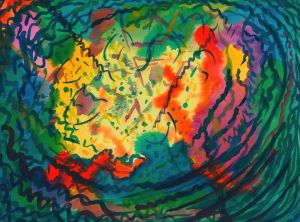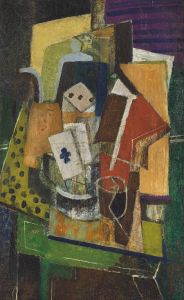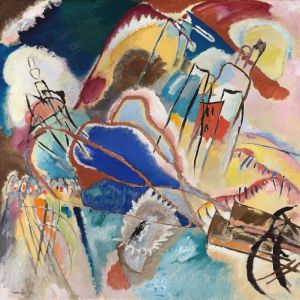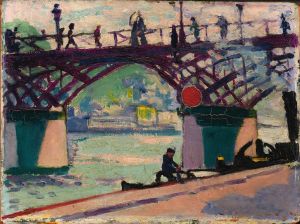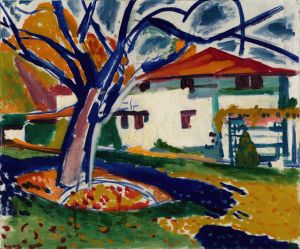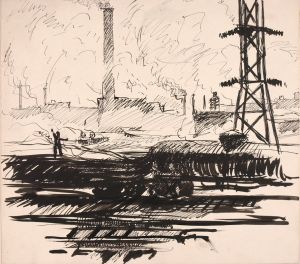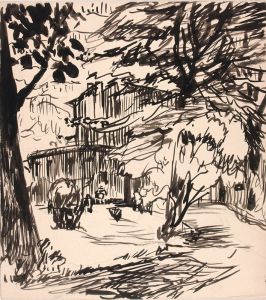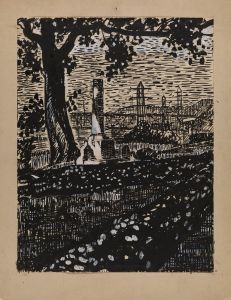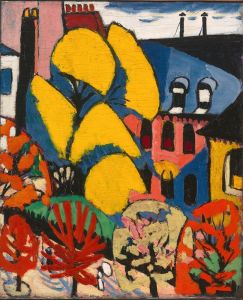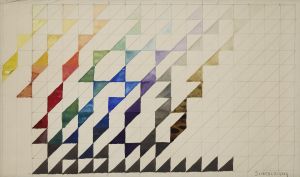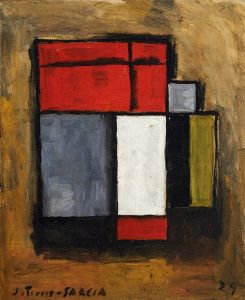
Fugue
A hand-painted replica of Henry Lyman Saÿen’s masterpiece Fugue, meticulously crafted by professional artists to capture the true essence of the original. Each piece is created with museum-quality canvas and rare mineral pigments, carefully painted by experienced artists with delicate brushstrokes and rich, layered colors to perfectly recreate the texture of the original artwork. Unlike machine-printed reproductions, this hand-painted version brings the painting to life, infused with the artist’s emotions and skill in every stroke. Whether for personal collection or home decoration, it instantly elevates the artistic atmosphere of any space.
Henry Lyman Saÿen was an American artist and inventor known for his contributions to both the art world and the field of X-ray technology. One of his notable works is the painting titled "Fugue." Saÿen was born in 1875 in Philadelphia, Pennsylvania, and he pursued his education in the arts at the Pennsylvania Academy of the Fine Arts. He later continued his studies in Paris, where he was influenced by the vibrant art scene and the avant-garde movements of the time.
"Fugue" is a reflection of Saÿen's exposure to modernist ideas and his interest in the interplay between structure and color. The title itself, "Fugue," suggests a musical analogy, drawing a parallel between the layered, interwoven melodies of a fugue in music and the visual complexity of the painting. This approach aligns with the broader modernist trend of the early 20th century, where artists sought to explore new forms of expression and abstraction.
Saÿen's work often incorporated elements of Cubism and Fauvism, movements that were gaining prominence during his time in Paris. Cubism, pioneered by artists like Pablo Picasso and Georges Braque, involved the fragmentation of objects into geometric shapes and the depiction of multiple perspectives within a single plane. Fauvism, on the other hand, was characterized by bold, vibrant colors and a focus on painterly qualities over realistic representation. "Fugue" likely embodies these influences, showcasing Saÿen's ability to blend different styles into a cohesive composition.
In addition to his artistic endeavors, Saÿen made significant contributions to science and technology. He worked with the renowned inventor Thomas Edison and played a role in the development of early X-ray technology. Saÿen's background in both art and science is evident in his meticulous approach to composition and his interest in exploring the underlying structures of visual forms.
While specific details about "Fugue" such as its dimensions, medium, and current location may not be widely documented, the painting remains an important part of Saÿen's artistic legacy. It exemplifies his innovative spirit and his ability to bridge the gap between different disciplines. Saÿen's work, including "Fugue," continues to be studied and appreciated for its contribution to the evolution of modern art.
Henry Lyman Saÿen passed away in 1918, but his work lives on, offering insight into the dynamic and transformative period of art history in which he was active. His paintings, including "Fugue," serve as a testament to his skill and vision as an artist who was unafraid to experiment and push the boundaries of traditional artistic conventions.





